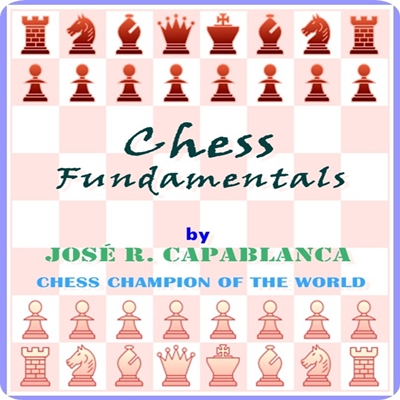Chess Fundamentals by JOSÉ R. CAPABLANCA : (full image Illustrated)
Chess Fundamentals by JOSÉ R. CAPABLANCA : (full image Illustrated)
http://thaiperfect.com/ebooks/?q=chess
Chess Fundamentals was first published thirteen years ago. Since then there have appeared at different times a number of articles dealing with the so-called Hypermodern Theory. Those who have read the articles may well have thought that something new, of vital importance, had been discovered. The fact is that the Hypermodern Theory is merely the application, during the opening stages generally, of the same old principles through the medium of somewhat new tactics. There has been no change in the fundamentals. The change has been only a change of form, and not always for the best at that.
In chess the tactics may change but the strategic fundamental principles are always the same, so that Chess Fundamentals is as good now as it was thirteen years ago. It will be as good a hundred years from now; as long in fact as the laws and rules of the game remain what they are at present. The reader may therefore go over the contents of the book with the assurance that there is in it everything he needs, and that there is nothing to be added and nothing to be changed. Chess Fundamentals was the one standard work of its kind thirteen years ago and the author firmly believes that it is the one standard work of its kind now.
J. R. CAPABLANCA, New York Sept. 1, 1934
LIST OF CONTENTS
PART I.
CHAPTER I. First Principles: Endings, Middle-game and Openings
1. Some Simple Mates
2. Pawn Promotion
3. Pawn Endings
4. Some Winning Positions in the Middle-game
5. Relative Value of the Pieces
6. General Strategy of the Opening
7. Control of the Centre
8. Traps
CHAPTER II. Further Principles in End-game Play
9. A Cardinal Principle
10. A Classical Ending
11. Obtaining a Passed Pawn
12. How to find out which Pawn will be the first to Queen
13. The Opposition
14. The Relative Value of Knight and Bishop
15. How to Mate with Knight and Bishop
16. Queen against Rook
CHAPTER III. Planning a Win in Middle-game Play
17. Attacking without the aid of Knights
18. Attacking with Knights as a Prominent Force
19. Winning by Indirect Attack
CHAPTER IV. General Theory
20. The Initiative
21. Direct Attacks en masse
22. The Force of the Threatened Attack
23. Relinquishing the Initiative
24. Cutting off Pieces from the Scene of Action
25. A Player's Motives Criticised in a Specimen Game
CHAPTER V. End-game Strategy
26. The Sudden Attack from a Different Side
27. The Danger of a Safe Position
28. Endings with one Rook and Pawns
29. A Difficult Ending: Two Rooks and Pawns
30. Rook, Bishop and Pawns v. Rook, Knight and Pawns
CHAPTER VI. Further Openings and Middle-games
31. Some Salient Points about Pawns
32. Some Possible Developments from a Ruy Lopez
33. The Influence of a "Hole"
PART II. ILLUSTRATIVE GAMES
1. Queen's Gambit Declined (Match, 1909) White: F. J. Marshall. Black: J. R. Capablanca.
2. Queen's Gambit Declined (San Sebastian, 1911) White: A. K. Rubinstein. Black: J. R. Capablanca.
3. Irregular Defence (Havana, 1913) White: D. Janowski. Black: J. R. Capablanca.
4. French Defence (St. Petersburg, 1913) White: J. R. Capablanca. Black: E. A. Snosko-Borovski.
5. Ruy Lopez (St. Petersburg, 1914) White: Dr. E. Lasker. Black: J. R. Capablanca.
6. French Defence (Rice Memorial Tournament, 1916) White: O. Chajes. Black: J. R. Capablanca.
7. Ruy Lopez (San Sebastian, 1911) White: J. R. Capablanca. Black: A. Burn.
8. Centre Game (Berlin, 1913) White: J. Mieses. Black: J. R. Capablanca.
9. Queen's Gambit Declined (Berlin, 1913) White: J. R. Capablanca. Black: R. Teichmann.
10. Petroff Defence (St. Petersburg, 1914) White: J. R. Capablanca. Black: F. J. Marshall.
11. Ruy Lopez (St. Petersburg, 1914)
12. French Defence (New York, 1918)
13. Ruy Lopez (New York, 1918)
14. Queen's Gambit Declined (New York, 1918)

 Cart
Cart  Checkout
Checkout